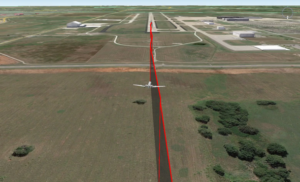Wake Mitigation benefits have been found in results from the implementation of the FAA’s RECAT standards.

Benefits include increasing arrival rate by 20%, saving 3.3 minutes/flight in taxi-out time and 2.6 minutes/flight, 4.18 million gallons fuel savings per year, and a reduction of 39,992 metric tons of carbon dioxide per year. The goal of wake mitigation led to the creation of CSAOB’s Wake Modeling Group.
The Wake Modeling Group developed wake and weather dependent analytical engineering models, data sets, and analysis in order to increase the potential for improved capacity, reliability, and efficiency of the National Airspace System (NAS) while maintaining or improving safety. Other goals of the group include developing wake expertise for spacing categorization, forensic reconstruction of weather and wake related aviation accidents, and to support advanced ATM concepts development. The group has collaborated with the FAA to develop and incorporate viable wake vortex solutions into the NAS, and with the international community to create expertise.
Models Developed by the CSAOB
Fast-Time Wake Prediction Models
- For real-time predictions based on aircraft parameters and weather conditions
- Models: AVOSS Prediction Algorithm (APA), TASS Derived Algorithms for Wake Prediction (TDP)
- May form the basis of operational tools at a later stage of maturity
Modified Wake Tracking Algorithm (WakeMod)
- Estimates wake tracks and circulation strength from LIDAR data
Large Eddy Simulation
- Characterization of wake decay under varying conditions of atmospheric conditions
- Model: Terminal Area Simulation System (TASS)
Models used in Wake Vortex Research by CSAOB
Numerical Weather Prediction (NCEP/NCAR)
- Analyze/reconstruct three-dimensional weather fields
- Model: Weather Research and Forecast model (WRF)
Computational Fluid Dynamics (NASA LaRC)
- For characterization of “near wake” flowfield
- Model: Fully-Unstructured Navier-Stokes 3D (FUN3D)
External Agreements
Interagency with FAA for data sharing (IAA-882)
Interagency collaboration agreement with DLR
Volpe: Technical support to FAA Wake Turbulence Research Program
Software Exports (Wake Models & Lidar Algorithm)
FAA
CSSI, Inc.
DLR
George Mason University
MITRE
NorthWest Research Associates
Virginia Tech
Volpe
Datasets Delivered
FAA
DLR
MIT-LL
Volpe
Tech POC: Nashat Ahmad